Canon Dslr With Continuous Video Recording
The best DSLRs for video in 2022: create fantastic full HD and 4K video
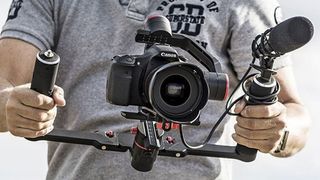
The best DSLRs for video are a comprehensive, rugged, fully featured option for any videographer. Mirrorless cameras may be the consumer models where a lot of technological advancements are happening, but the humble DSLR tends not only to be cheaper, but also will generally have a much wider selection of lenses. Wherever you are on your video journey, from absolute novice to seasoned professional, a DSLR can be the ideal choice – as long as you get the right one.
That's where we come in. While new DSLRs aren't too forthcoming these days, there are plenty of models widely available, many coming at significant discounts compared to when they were first released. Which one is right for you depends on your budget, and the kind of video you want to shoot.
We've compiled a quick guide below to the key features to think about when picking a DSLR for video:
Resolution This refers to the number of pixels you're working with, or the quality of your video. You'll commonly see DSLR resolution talked about as a choice between Full HD or 4K, as these are the common maximum resolutions of contemporary DSLRs. These days 4K is the professional standard, so if you're producing video for clients, you'll need to have it as an option – just be aware that some DSLRs shoot 4K with a severe crop that curtails its usability. We've specified which cameras on our shoot 4K cropped, and which don't.
LCD screen A fully articulated LCD screen is something that many photographers aren't too bothered about – for video users, however, it's a hugely useful feature. It lets you compose shots from different angles and heights, and also makes it easy to flip the screen around to film yourself, which is vital for solo vloggers.
Autofocus One of the strengths of DSLRs for videographers is their strong video autofocus. It gives you a huge deal of flexibility when shooting – though one thing to be aware of is that a DSLR's Live View autofocus (ability to focus when using the LCD) is often different to its regular autofocus. As a video shooter, you'll be using Live View a lot, so it's worth checking out the Live View autofocus a DSLR offers.
Frame rates In video, you may see a lot of numbers bandied around like 24p, 30p, 60p, 120p. These are the frame rates, a.k.a. how many frames per second a camera is shooting at. The more frames, the smoother the footage. This isn't necessarily always the goal – filmmakers, for instance, prefer 24p as it apes the classic frame rate of motion picture film. Once you go above 120p you're into slow-motion territory, which can also be hugely useful.
To make this guide easy to navigate, we've split it into sections. In the first part, we deal with the best DSLRs for beginner videographers, and if you're on a budget, these are also the cheapest. Next, we recommend the higher-grade (but still affordable) DSLRs that are best for enthusiasts. And lastly, we've picked out the best video DSLRs for experts and professionals. Whatever your experience level, the best video DSLR for you will almost certainly be on this list!
The best DSLRs for video in 2022
Best for beginners
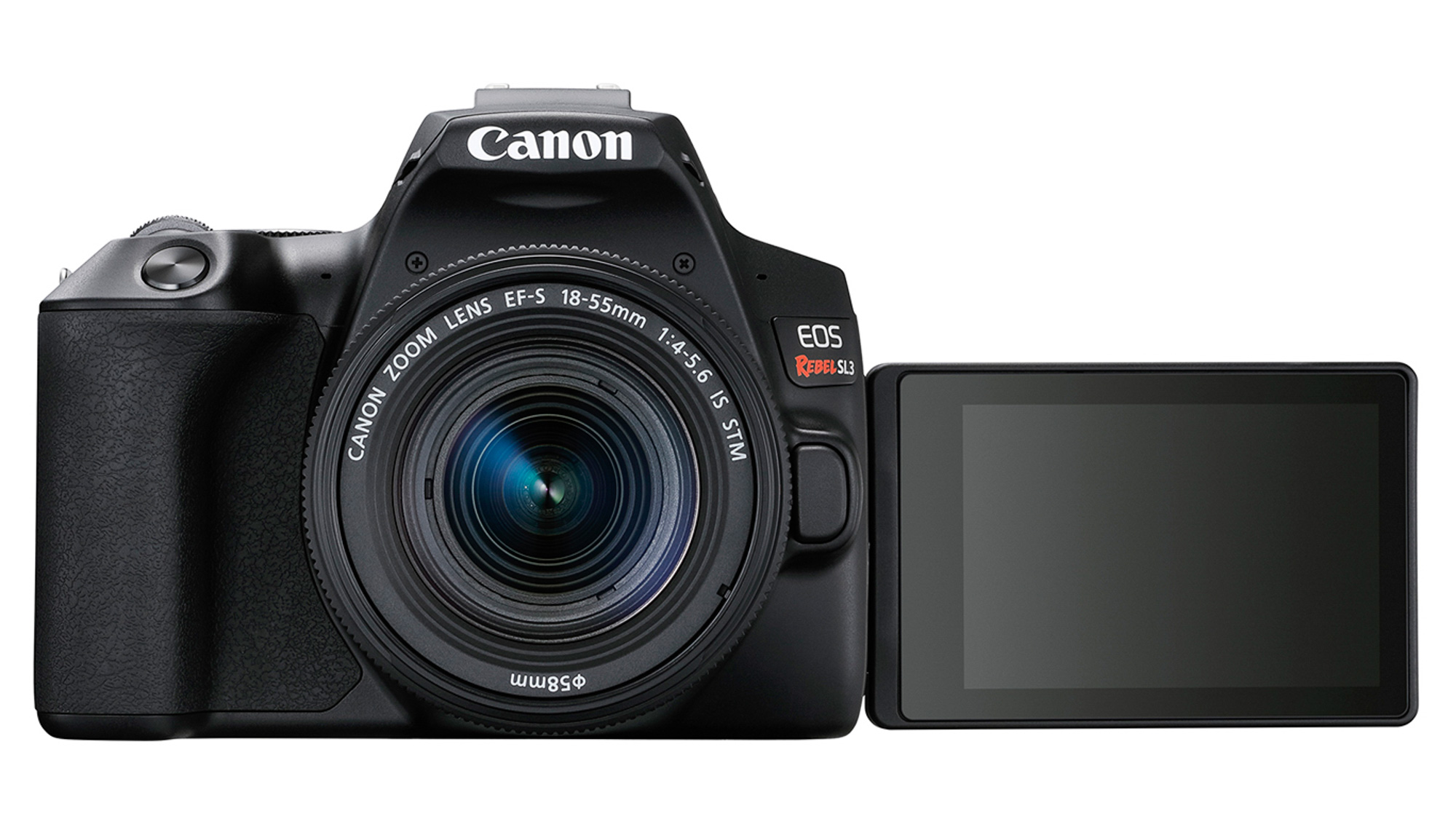
(opens in new tab)
If you're just starting out with making video content, then you'll probably have a restricted budget. For that reason, the Canon EOS 250D is an excellent option for beginners. You get a decent degree of video specs, in a very wallet-friendly model.
4K video is available - but with a fairly big crop (on top of the already cropped sensor), but at up to 60fps available in Full HD, you've got enough flexibility for recording vlogs. As we mentioned when we reviewed the camera, it's not the cheapest Canon DSLR, but it is in our opinion the cheapest one that's actually worth buying, especially for video. The fully articulating screen puts a lot of versatility at your disposal and makes it easy to record pieces to camera, while the small size of the camera also means it's well-suited for travel vlogging.
Read more: Canon Rebel EOS SL3 / EOS 250D review (opens in new tab)
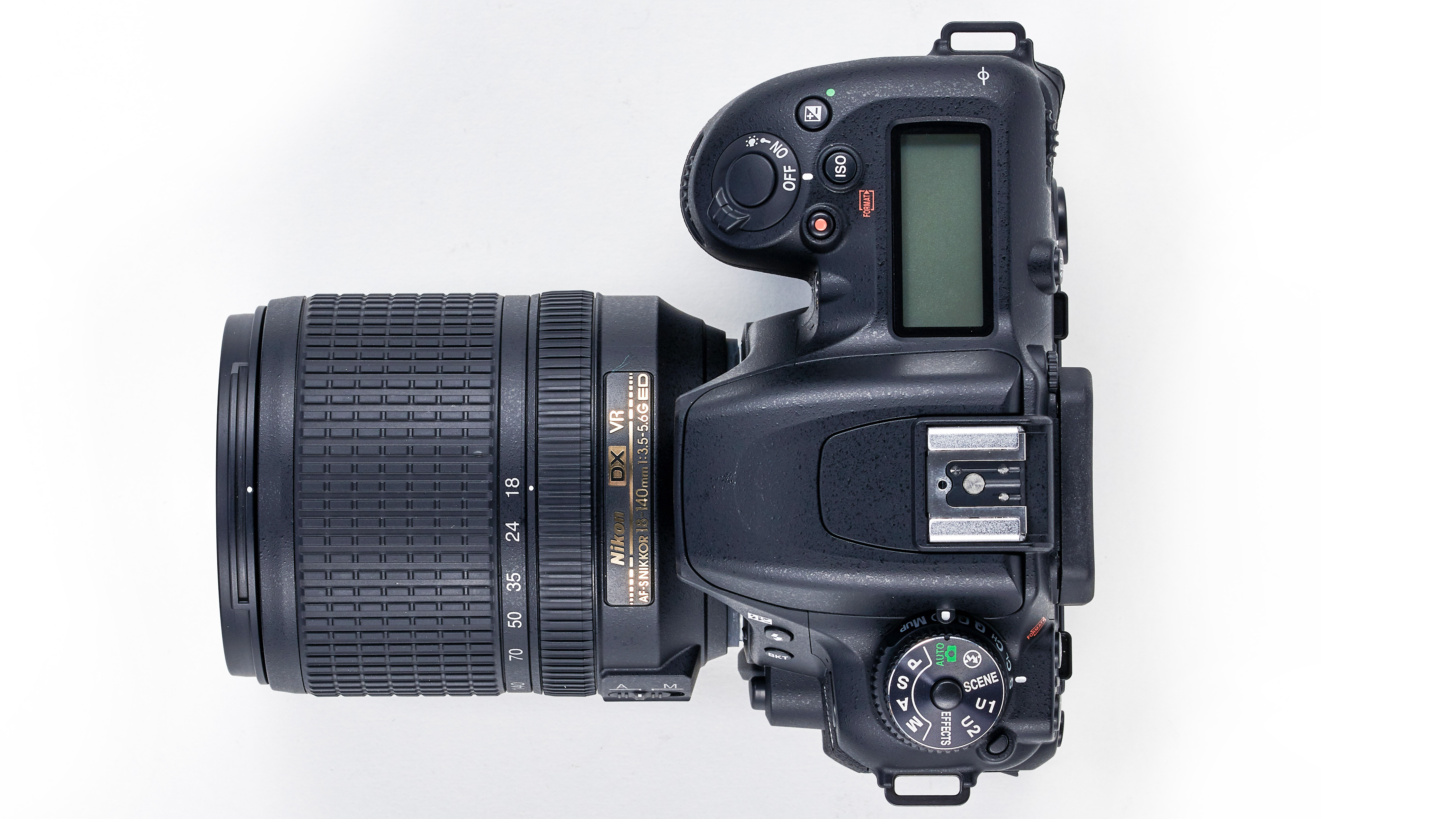
(opens in new tab)
This all-rounder is ideal for those who like to record both stills and video, especially photographers who are just starting to experiment with video content.
With its APS-C sized sensor and 4K crop applied, its best performance comes from Full HD video recording which you can capture up to 60fps. The screen tilts, making awkward angles helpful - though it should be noted that it doesn't face all the way forward, so vlogging/presenting is a bit trickier.
In our review we were particularly impressed by the high-ISO performance of the D7500, which is excellent for a camera at this price point, and gives the camera more versatility in low light. We also were reasonably impressed with the contrast-detect AF in Live View mode, which is what you'll mostly be using as a video shooter. It's a solid little performer.
Read more: Nikon D7500 review (opens in new tab)
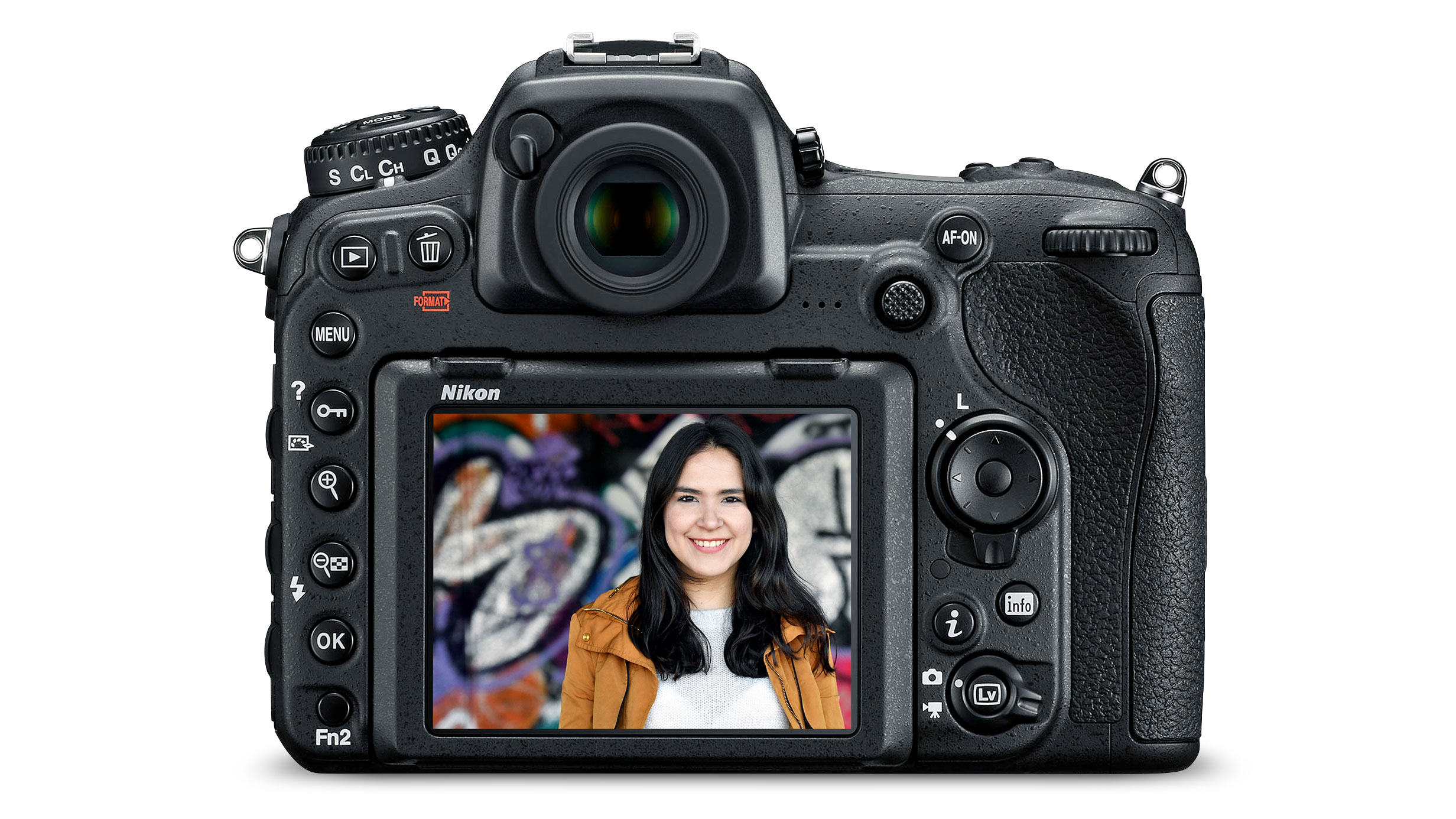
(opens in new tab)
The D500 is another excellent all-rounder that is well suited to photographers who are just starting to dabble in video content creation. With it being a few years old, you can also pick it up for a great price now - making it ideal for upgraders with a limited budget.
4K is offered (with a crop), so it's Full HD you're probably likely to use more often – with which you get a decent range of frame rates to make use of. Other useful features include a built-in interval timer, a time-lapse recording function and headphone / microphone sockets. In our review we were hugely impressed with the comprehensive feature-set of the Nikon D500 – and while it can be a little harder to find than it was at launch, its price has come down a little, making it a seriously tempting buy for any aspiring DSLR videographer.
Read more: Nikon D500 review (opens in new tab)
Intermediate enthusiasts
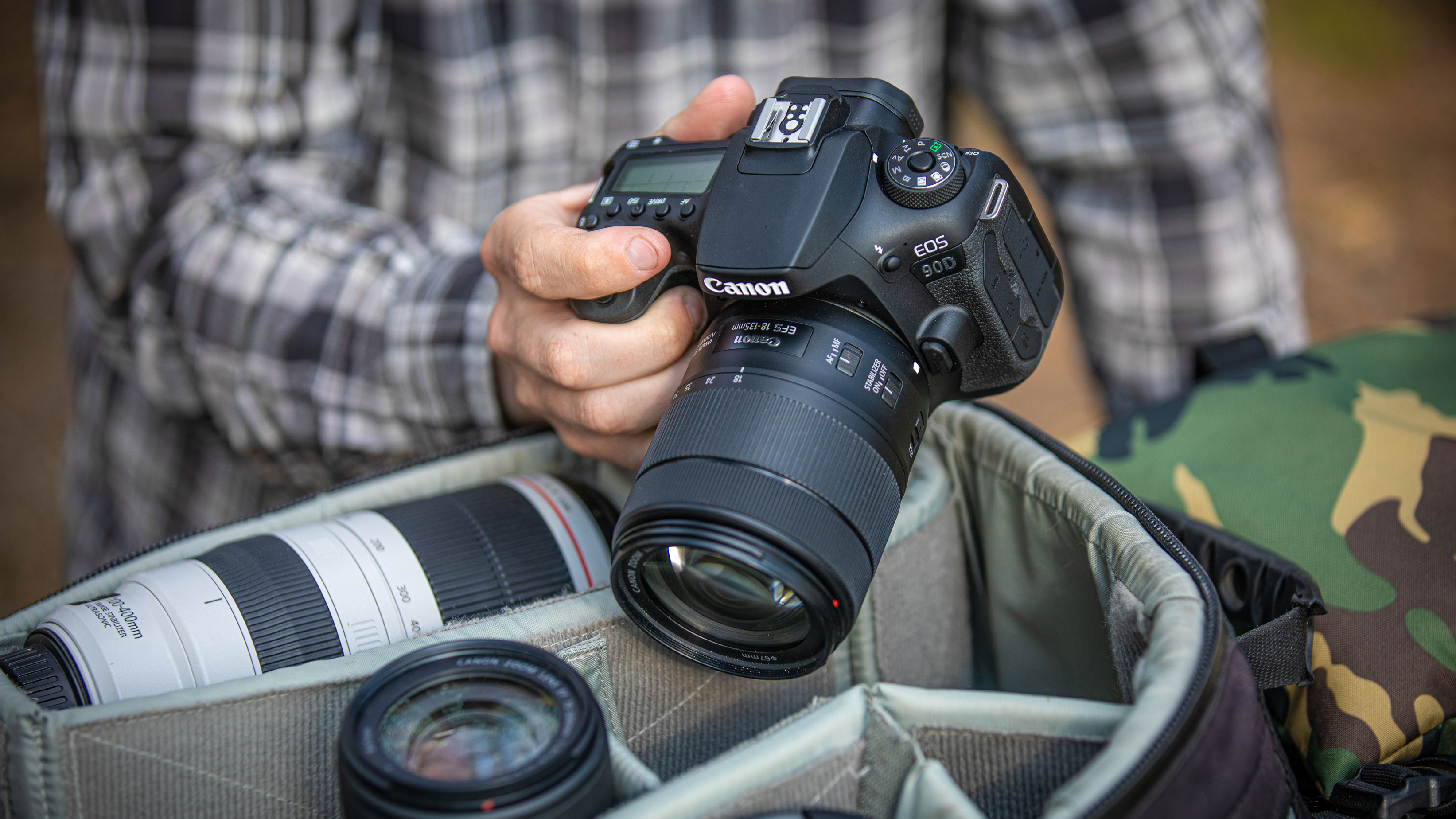
(opens in new tab)
There's a lot to like about the Canon EOS 90D if you're looking for a video-centric DSLR. With uncropped 4K video and a range of frame rates – particularly in full HD – this is an ideal mid-level DSLR.
The fully-articulating touchscreen makes it ideal for capturing all sorts of angles, including presenting to camera, while the Dual Pixel CMOS AF puts in a good performance when shooting video. Another bonus is the headphone and microphone connectors too, allowing you to get serious about sound.
While we did have to dock it points in our review for the fact that continuous AF is not available when shooting 120p video, the fact remains that the Canon EOS 90D is a full featured DSLR. It's very popular with YouTubers – and trust us, there's a reason.
Read more: Canon EOD 90D review (opens in new tab)

(opens in new tab)
The Nikon D850 has been the DSLR to beat for several years, and with its blend of high-resolution sensor, excellent handling and range of features, it's arguably still the king of the sector.
For video users, you get uncropped 4K and a diverse range of frame rates in both 4K and Full HD resolutions. Unlike many professional/advanced-level full-frame DSLRs, the screen tilts. Although that's not super-handy for vlogging, it's very helpful for recording from other awkward angles.
We gave the Nikon D850 the highest score possible in our review – really there was no other choice. It's an absolutely superb DSLR, one of the best ever made, and the full-sensor-width 4K video it shoots is absolutely gorgeous. Any videographer could happily shoot with this camera for years and never feel short-changed.
Read more: Nikon D850 review (opens in new tab)
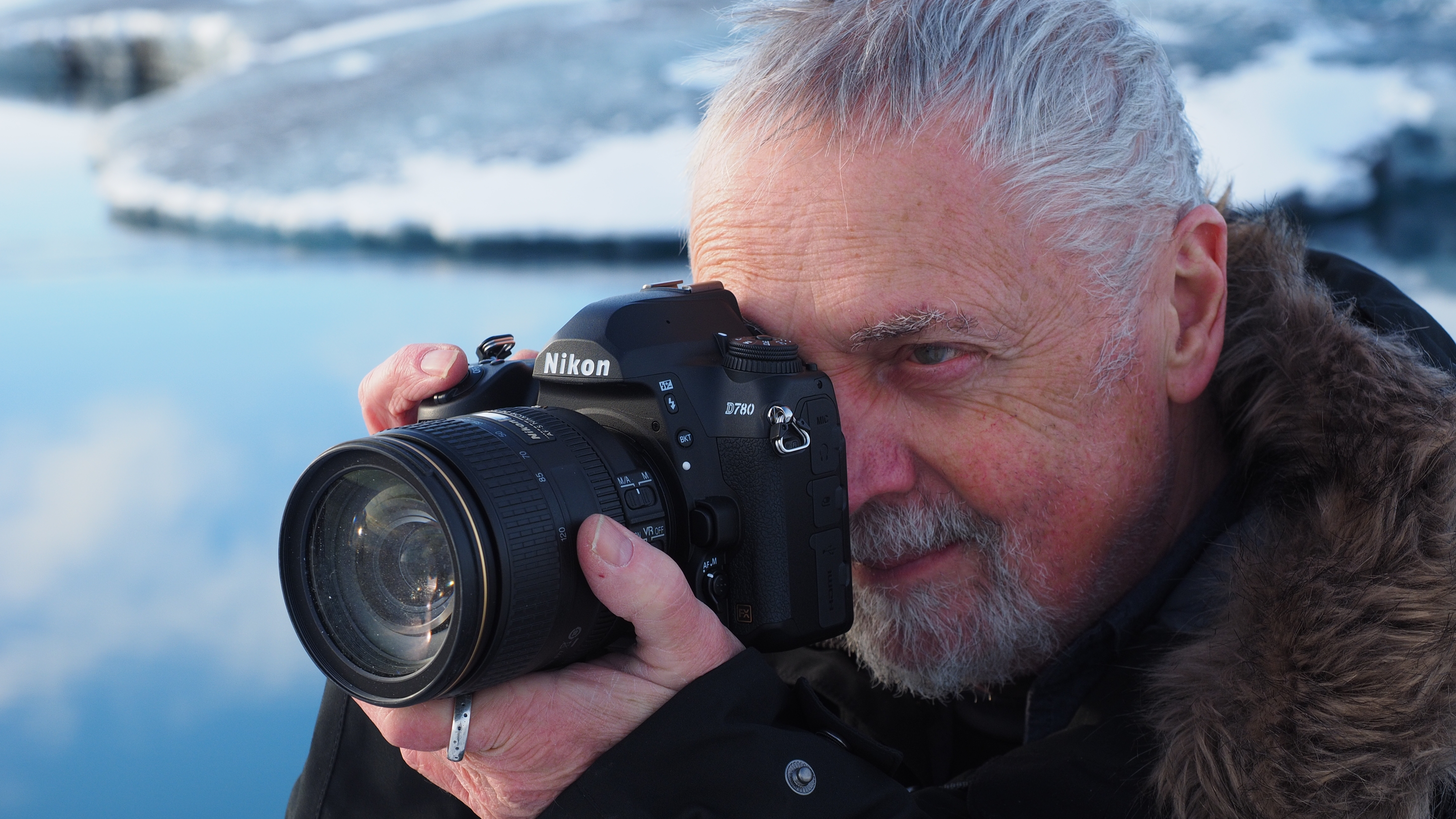
(opens in new tab)
Using a full-frame DSLR for video makes a lot of sense, but if you're keen not to overspend, the D780 is a good intermediate option that gives you a lot of value for money. Another Nikon camera that earned full points in our review, it's a reminder of just how good a modern DSLR can be.
You get uncropped 4K here, with a range of frame rates if you step down to Full HD - including slow motion recording. Once again, we've got a tilting screen – rather than fully articulating – so it's best suited to video content creators rather than vloggers.
To that end, Nikon has added a range of professional video specs that might also come in handy such as N-Log recording, Hybrid Log Gamma (HLG) and Timecode output. Microphone and headphone sockets round out the spec sheet to make this appealing to serious movie shooters.
Read more: Nikon D780 review (opens in new tab)
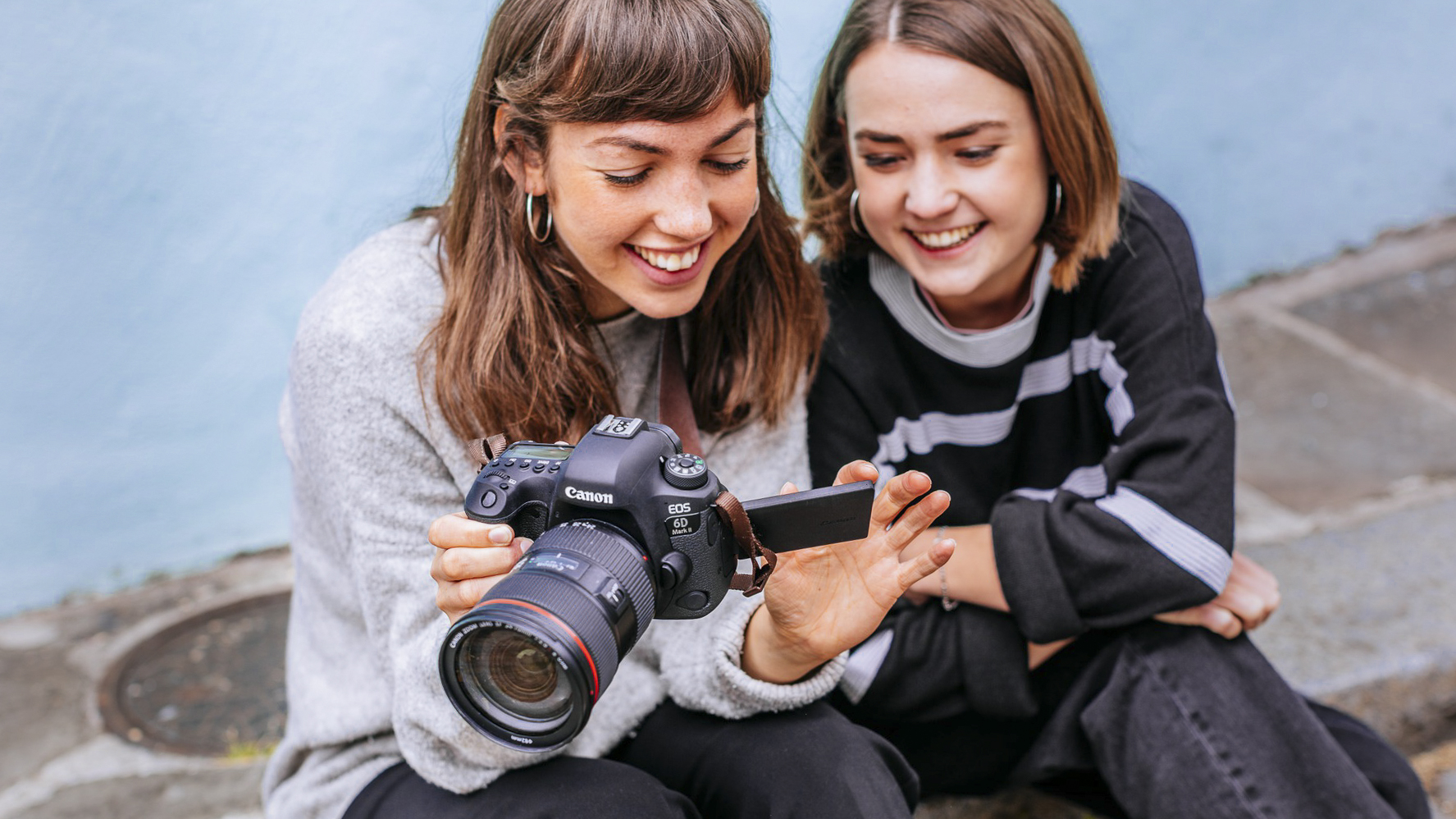
(opens in new tab)
If you're really after a full-frame DSLR for your video, but you don't want to spend a huge amount, the Canon EOS 6D Mark II is a good entry-level full-framer that suits those who create occasional videos.
The biggest downside here is the lack of 4K shooting, something which will be a deal-breaker for some but less so for others. Otherwise, you get a good degree of frame rates and the Dual Pixel CMOS AF works well, too, especially in Live View, as we noted in our review of the camera. A vari-angle touchscreen makes it easy to capture awkward angles too.
Primarily, this is a camera for stills photographers, but if video is a secondary concern, it's certainly worth thinking about.
Read more: Canon EOS 6D Mark II review (opens in new tab)
Experts and professionals
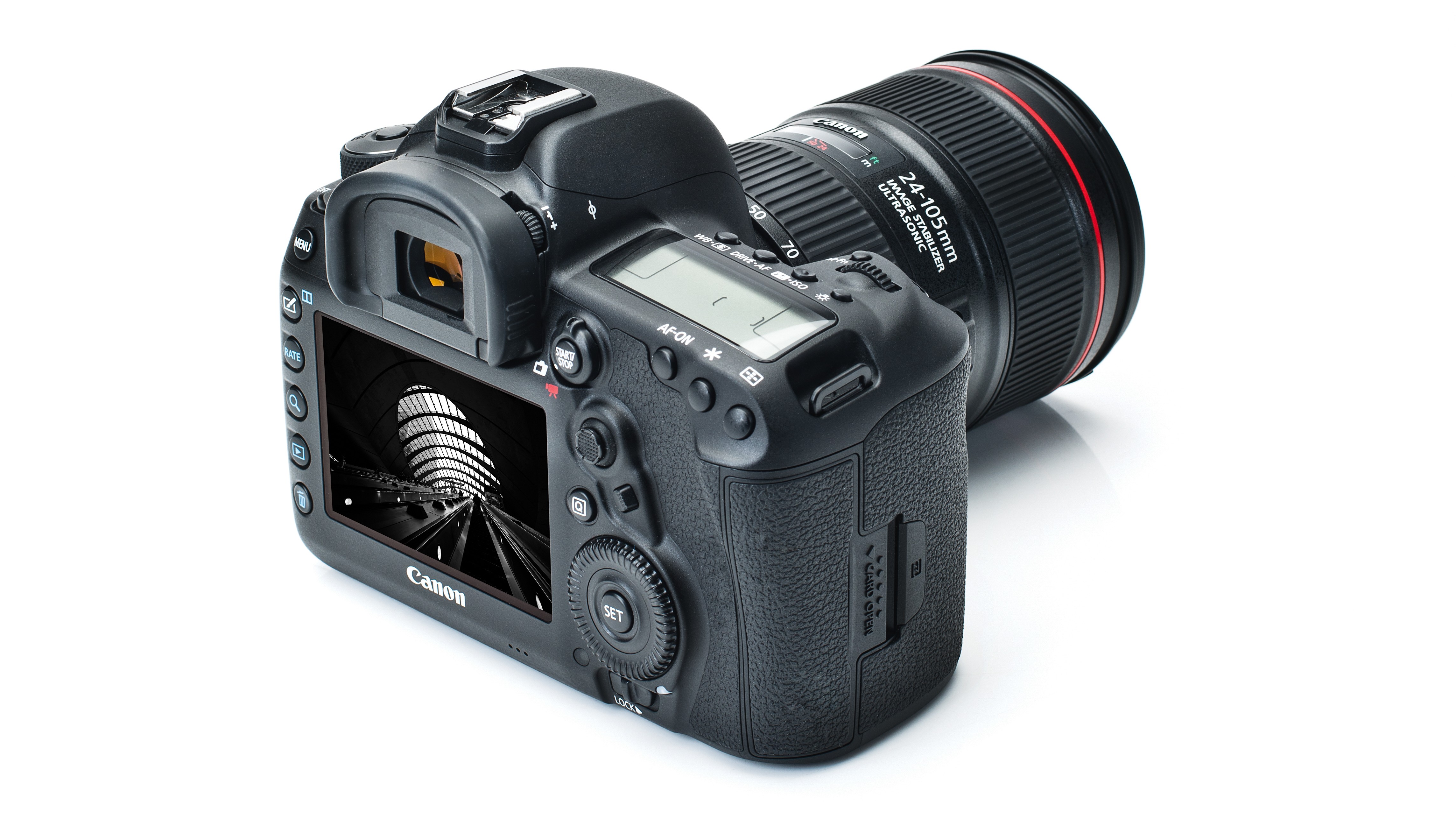
(opens in new tab)
It was the 5D series that started the trend for video in DSLRs, the legacy of which we can still see today in modern DSLRs and even mirrorless cameras.
As such, the 5D Mark IV is a fantastic option that will suit advanced shooters and video makers. There's 4K (albeit subject to a crop), and a great range of different frame rates – though you will have to drop down to 720p HD to record slow-motion, and the fixed screen may annoy some.
Other useful video features include microphone and headphone sockets, time-lapse video recording, HDR Movie and the ability to record in Canon Log Gamma. In our full review, we found that the Canon EOS 5D Mark IV really is an all-rounder camera – while it doesn't truly excel at any one thing, it does everything to a good-to-very-good standard, and that makes it a tempting option for pretty much any videographer.
Read more: Canon EOS 5D Mark IV review (opens in new tab)
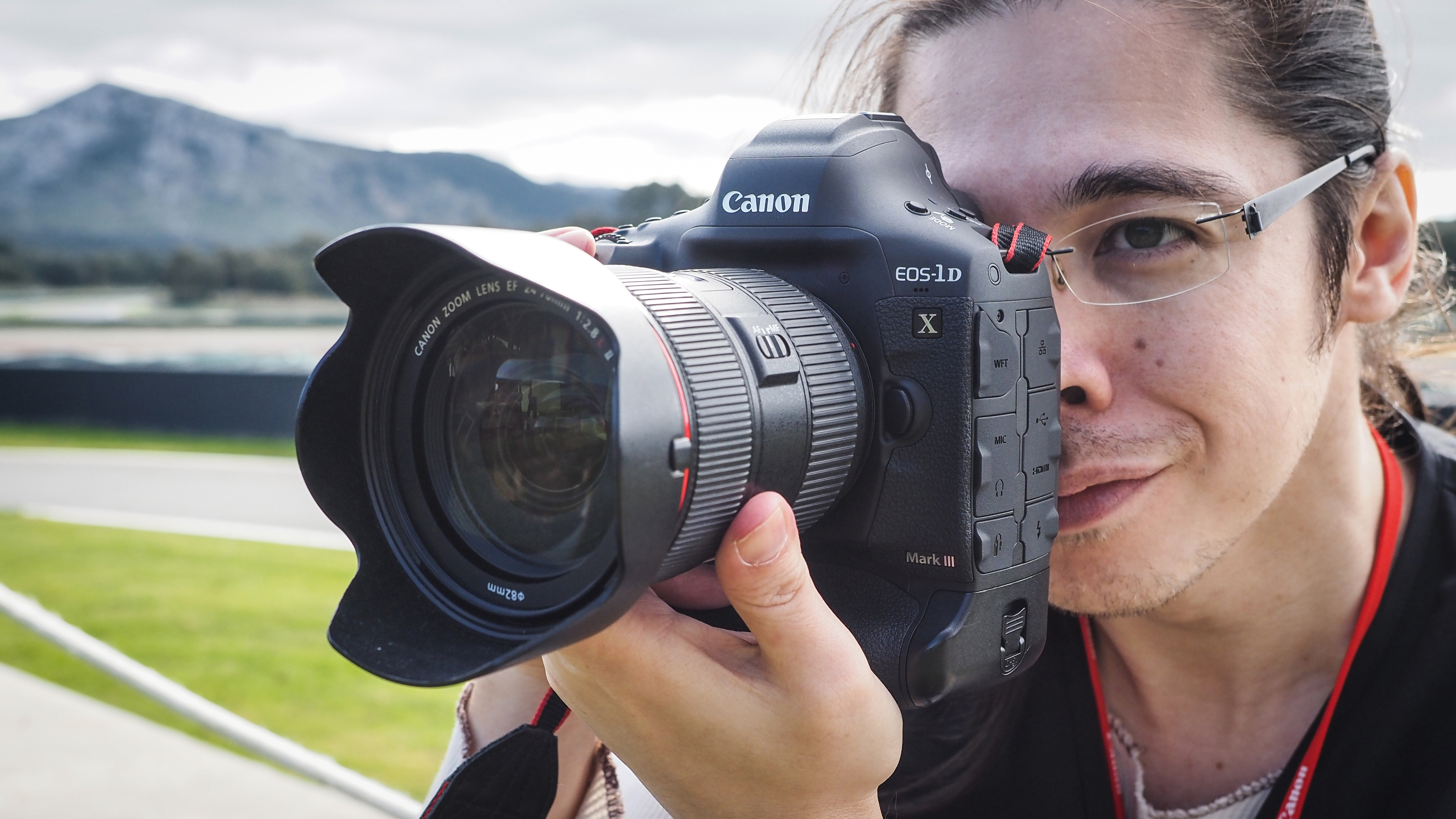
(opens in new tab)
The Canon 1DX Mark III has a huge wealth of video features - but you'll likely need huge wealth if you want to buy one.
If money is no object it's the camera to go for, thanks to specifications such as uncropped 4K video at up to 60fps. You can even go one step further and produce 4K RAW (also known as 5.5K).
Smooth focusing is provided thanks to Dual Pixel CMOS AF (though it's to be noted that this is not available in uncropped 4K/RAW at 60/50p), while there's also a host of manual focusing controls, such as focus peaking, that professionals crave.
If video is at the forefront of your mind, the 1DX Mark III is an excellent choice. As we said in our review, it really does bridge the gap between DSLR and mirrorless, and shows that DSLRs will go on to be an exciting format, even if fewer of them are being made.
Read more: Canon EOS-1D X Mark III review (opens in new tab)

Nikon's flagship DSLR is a good choice for professionals who mainly shoot stills, but also want a capable video camera.
Unfortunately, especially considering the price tag, 4K video comes with a crop, but Full HD gives you a good range of frame rates to work with.
Autofocusing via Live View is also a bit of a let down here, especially again in comparison to its stellar performance through the viewfinder. If you're primarily a stills shooter, it'll be less of an issue, but it is a disappointment for a flagship.
Putting those issues aside, there are some useful other features, such as focus peaking, zebras and time coding - so as long as you're happy with manual focusing it can still be a very good tool for professionals. A fixed screen makes it less appealing to vloggers / presenters, but for that type of user, the D6 is likely be overkill anyway.
Read more: Nikon D6 review (opens in new tab)
How we test cameras
We test mirrorless and DSLR cameras (opens in new tab) both in real-world shooting scenarios and in carefully controlled lab conditions. Our lab tests measure resolution, dynamic range and signal to noise ratio. Resolution is measured using ISO resolution charts, dynamic range is measured using DxO Analyzer test equipment and DxO Analyzer is also used for noise analysis across the camera's ISO range. We use these real-world testing and lab results to inform our comments in buying guides. For compact cameras, we judge on real world handling and photographic results alone.
Read more:
• Best video-editing software (opens in new tab)
• The best laptop for video editing (opens in new tab)
• Best video tripods (opens in new tab)
• Best microphones (opens in new tab) for vlogging & videomaking
• Best 4K cameras for video (opens in new tab)
• Best vlogging cameras (opens in new tab)
• Best video editing monitors (opens in new tab)
• Best keyboard for video editing (opens in new tab)
• Best audio recorders (opens in new tab)

Thank you for reading 5 articles this month* Join now for unlimited access
Enjoy your first month for just £1 / $1 / €1
*Read 5 free articles per month without a subscription

Join now for unlimited access
Try first month for just £1 / $1 / €1
Related articles
wadealianobson1957.blogspot.com
Source: https://www.digitalcameraworld.com/buying-guides/best-dslrs-for-video